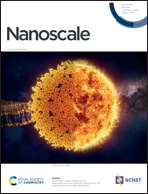Tuning the electronic structure of Pd by the surface configuration of Al2O3 for hydrogenation reactions†
Abstract
The electronic interaction between a metal and a support modulates the electronic structures of supported metals and plays an important role in manipulating their catalytic performance. However, this interaction is mainly realized in heterogeneous catalysts composed of reducible oxides. Herein, we demonstrate the electronic interaction between γ-Al2O3 and η-Al2O3 with varying acid–base properties and supported Pd nanoparticles (NPs) of 2 nm in size. The strength and number of acid–base sites on the supports and catalysts were systemically characterized by FT-IR spectroscopy and TPD. The supported Pd NPs exhibit electron-rich surface properties by receiving electrons from the electron-donating basic sites on γ-Al2O3, which are beneficial for catalyzing the hydrogenation of nitrobenzene. In contrast, Pd NPs loaded on η-Al2O3 are electron-deficient because of the rich electron-withdrawing acid sites of η-Al2O3. As a result, Pd/η-Al2O3 exhibits higher catalytic activity in phenylacetylene hydrogenation than Pd/γ-Al2O3. Our results suggest a promising route for designing high-performance catalysts by adjusting the acid–base properties of Al2O3 supports to maneuver the electronic structures of metals.



 Please wait while we load your content...
Please wait while we load your content...